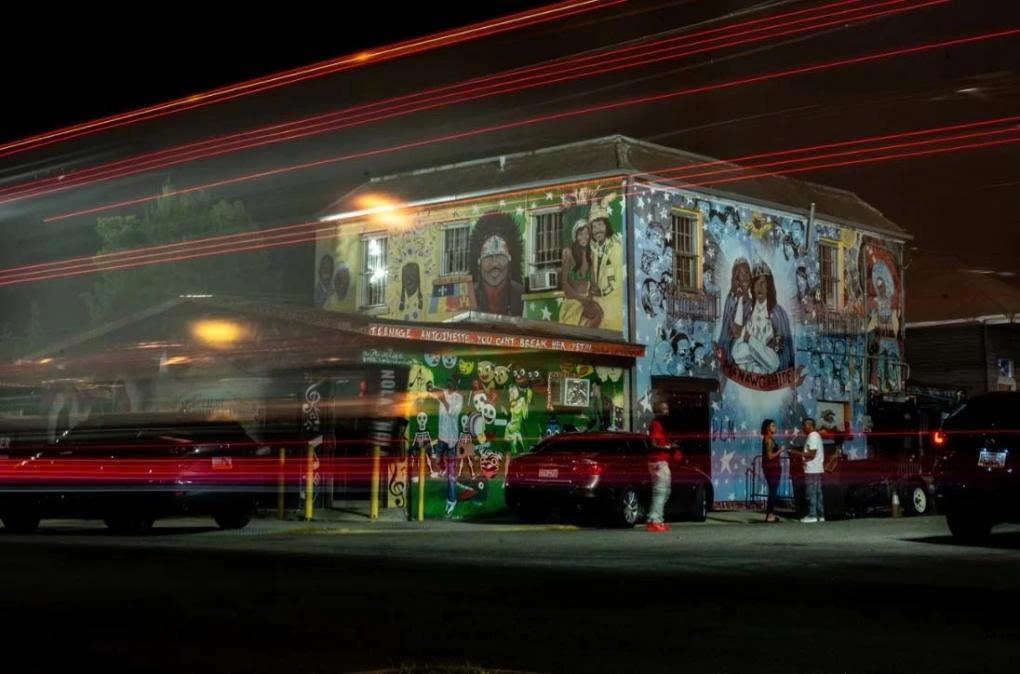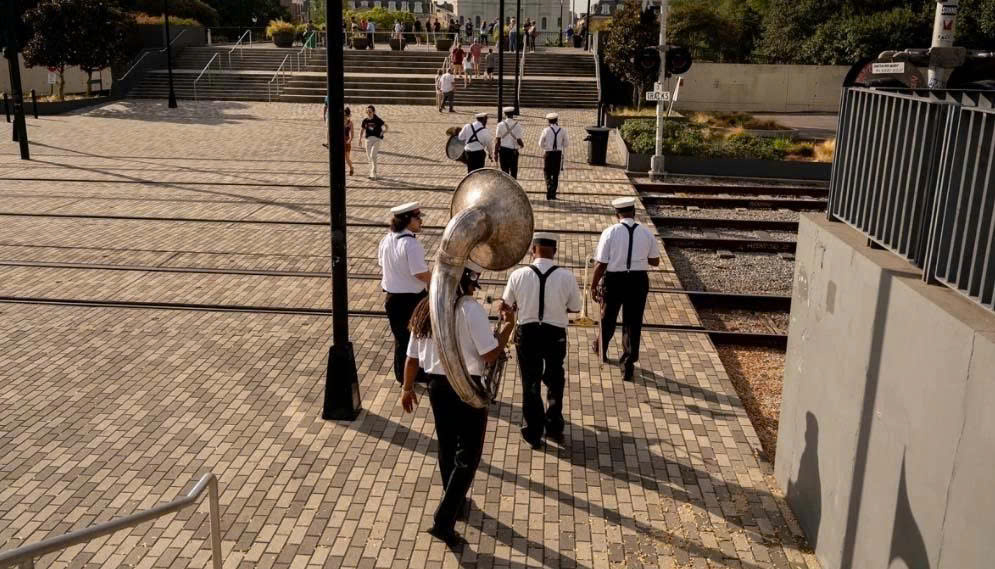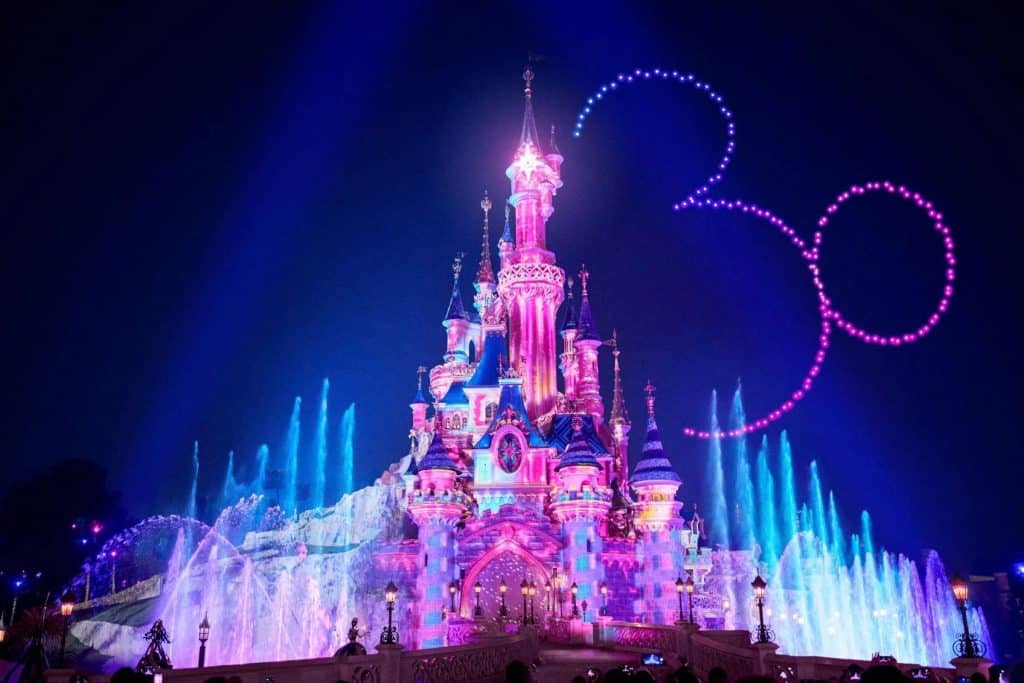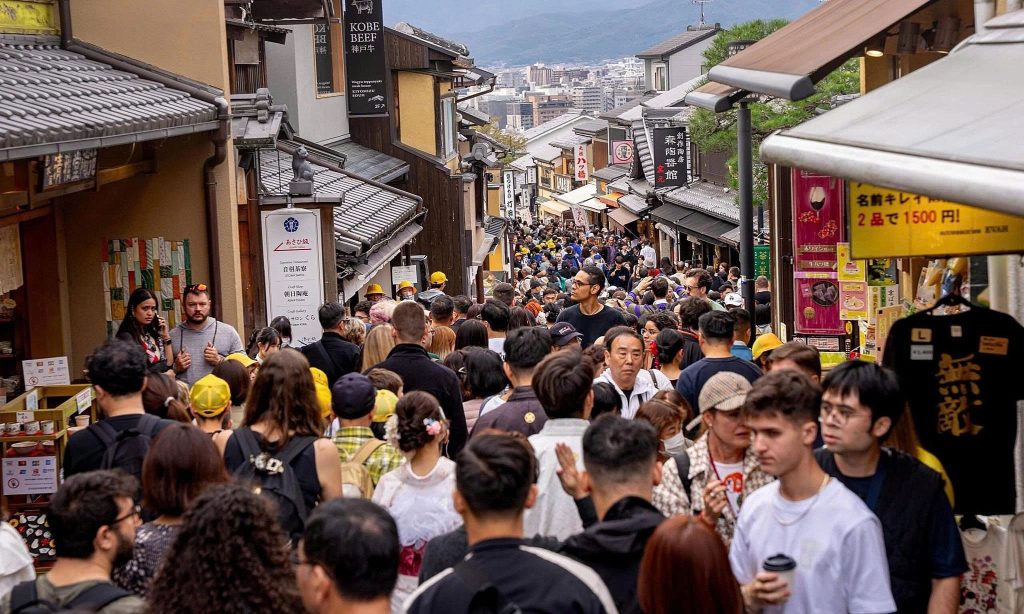In New Orleans, funerals begin with mournful tones but quickly transition into a vibrant celebration for the departed, strongly marked by West African and Caribbean cultural influences.
At the corner of Dauphine and Toulouse in New Orleans, Louisiana, two police officers on motorcycles block the intersection. A musician adjusts his bow tie and raises his trombone. The first notes of the hymn “Just a Closer Walk with Thee” (often played at funerals) ring out from a trumpet, followed by a saxophone and a sousaphone. The band begins to move through the streets with a crowd following in their wake.
Initially, the funeral march is played slowly and solemnly. Then, the rhythm gradually quickens, and the music becomes full of life. In every neighborhood the crowd passes through, the atmosphere is one of dignity yet excitement and palpable joy.
This is a “second line” funeral—a term for special parades where the procession follows the brass band, and everyone participates in high spirits. In New Orleans, funerals are transformed into public, open-air ceremonies where grief is shared and slowly transitions into a celebration honoring the deceased, rather than a somber occasion of weeping. Some processions last only a few blocks, but for major occasions, they can march for several miles. This tradition originates from West African and Caribbean cultures and has now become a defining feature of New Orleans.

These “second line” parades are not exclusively for funerals; they are also held for weddings, social gatherings, and important events. New Orleans is a city where the sound of a trombone can cause a traffic jam, and a sousaphone can draw thousands of people into the streets.
The heart of every procession is the brass band, composed of musicians in crisply ironed white shirts and sharply creased black trousers, instruments resting on their shoulders.
“If you grew up here, those African drums, the dance—the things that came from the time of slavery and Congo Square—are in our DNA,” said Roger Lewis, an 83-year-old resident, clad in a clean paisley-patterned shirt.
A New Orleans native and a founding member of the Dirty Dozen Brass Band, Lewis still plays the baritone and soprano saxophones and sings for the group, which was established in 1977. Dirty Dozen is currently considered one of the most famous brass bands globally. The band has toured five continents, from Amsterdam to Bangkok, won a Grammy Award in 2023, and appeared in numerous films.
Across New Orleans, dozens of brass bands play every night at bars like Blue Nile, The Spotted Cat, or Kermit’s Tremé Lounge. Each neighborhood has its own style: Uptown is lively, Tremé is classic, and New Orleans East has a strong hip-hop influence. “Brass band music has never belonged to just one place,” says Keith Frazier, drummer for the Rebirth Brass Band.

Since the 1990s, the Rebirth Brass Band has regularly performed every Tuesday night at the Maple Leaf Bar, a venue that holds only 100 people but often squeezes in 300 spectators. After the pandemic, they moved to a new location in Central City, continuing to blend jazz, hip hop, and reggae—music that “can do everything,” according to drummer Keith Frazier.
According to Ron Rona, who spent 20 years as the artistic director at Preservation Hall, which preserves and celebrates New Orleans music, this culture is what makes the city “unique in the world.”
He explains that brass bands have integrated into the daily lives of the residents, maintaining a long-lasting presence. Many bands are founded by high school friends, and musicians in the city seem to “have known each other their entire lives.” Then, in a continuous cycle, many become mentors to the next generation.
If tourists visit New Orleans on a fine day, they might catch sight of a new bride peering out from a doorway somewhere in the French Quarter. The trombonist of the Kinfolk group, along with the brass band, stands below and asks: “Are you ready?” The new bride smiles, raises the small umbrella in her hand, and steps out with her husband to the vibrant music echoing down the street. That is life; that is the long-standing tradition in New Orleans.
(According to CNN)

















